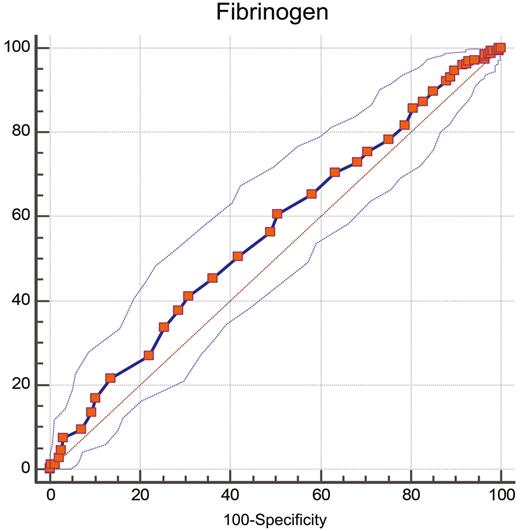Association of Preoperative Plasma Fibrinogen Level with Postoperative Bleeding after On-pump Coronary Bypass Surgery
Our primary aim was to investigate the association between the preoperative concentration of plasma fibrinogen and the volume of postoperative bleeding. Our secondary aim was to identify whether there is a possible correlation between the patients’ different characteristics and haemostatic laboratory variables and the postoperative amount of bleeding after on-pump coronary artery bypass grafting procedures.
A total of 550 adult patients undergoing isolated coronary artery bypass grafting on cardiopulmonary bypass in our hospital were enrolled and investigated retrospectively. The total amount of chest tube drainage within the first 24 postoperative hours or until the patient was re-explored for bleeding was assessed. Excessive bleeding was defined as more than 500 ml drainage in the first 24 h. The patients were divided into 2 groups: Group 1: the patients who bled ≤500 ml in the first 24 h and Group 2: the patients who bled >500 ml in the first 24 h.
A preoperative fibrinogen threshold associated with excessive bleeding was investigated by receiver operating characteristic curve analyses, revealing a calculated cutoff value of 3.1 g/l. Risk factors for increased bleeding were analysed by a logistic regression model that revealed male gender (P < 0.001), body mass index ≤28.3 kg/m2 (P < 0.001), platelet count ≤233 × 103/µl (P < 0.001), estimated glomerular filtration rate ≤90.8 ml/min (P < 0.001) and fibrinogen ≤3.1 g/l (P = 0.01) as significant predictors.
A preoperative plasma fibrinogen concentration <3.1 g/l was associated with increased risk of excessive bleeding in patients undergoing on-pump coronary artery bypass grafting. The amount of postoperative blood loss can be roughly predicted with simple preoperative blood tests.
